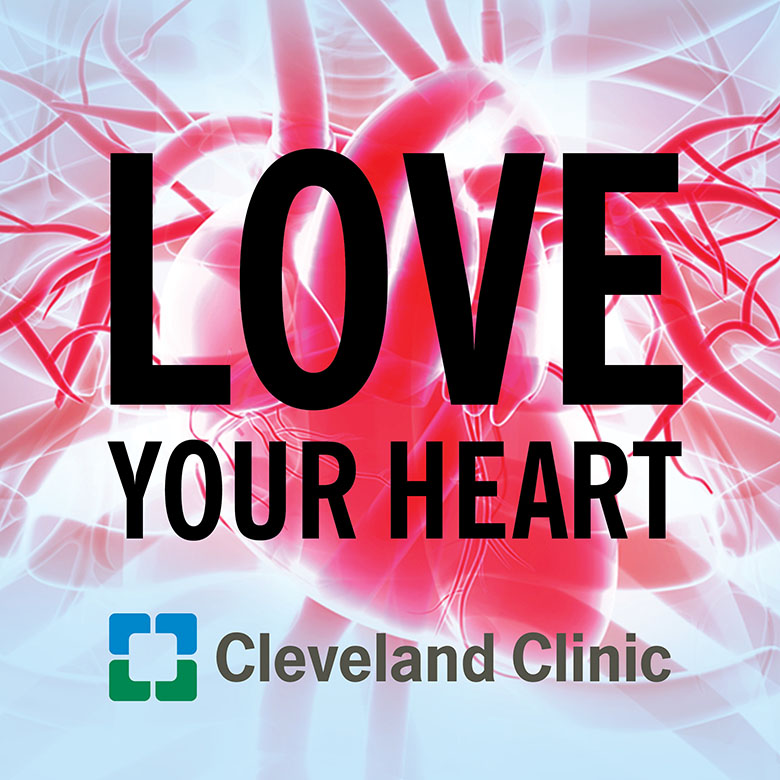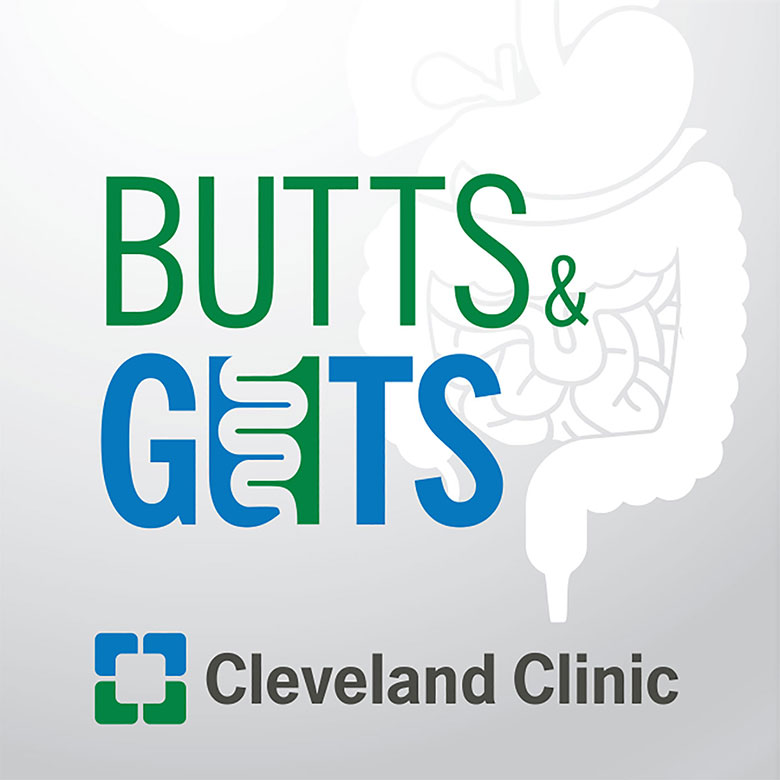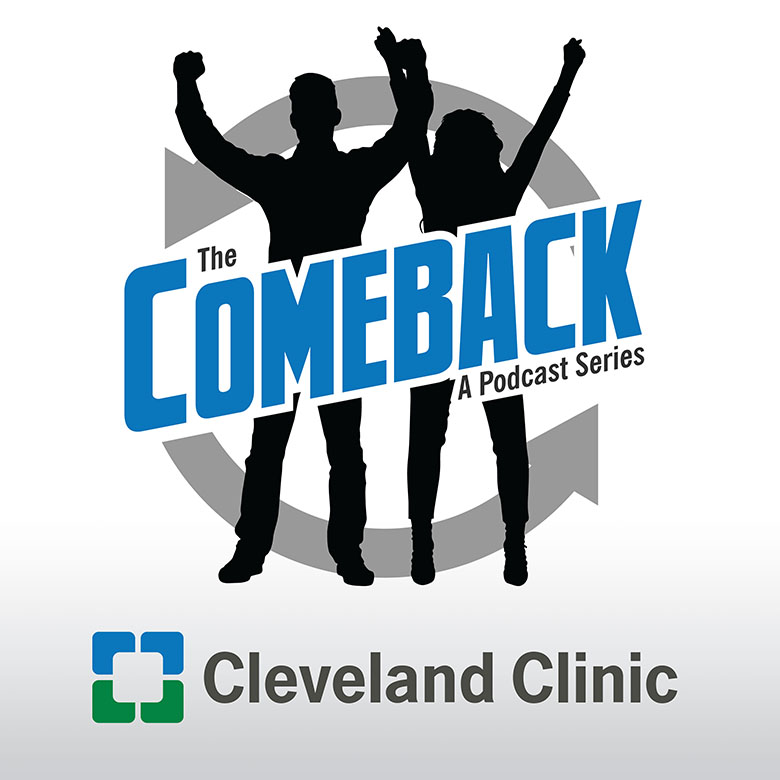Heart Failure Awareness

In honor of Heart Failure Awareness Week, Steven Nissen, MD, Chairman of the Robert and Suzanne Tomsich Department of Cardiovascular Medicine at Cleveland Clinic talks with Randall Starling, MD, MPH, President of the Heart Failure Society of America (HFSA) and Jerry Estep, MD, Section Head of Heart Failure at Cleveland Clinic about what we need to know about heart failure – whether a patient or provider; including the extent that heart failure affects us, treatment options – from medications – to the newest devices and transplant, and differences in causes and/or presentation based on gender and race.
Subscribe: Apple Podcasts | Podcast Addict | Buzzsprout | Spotify
Heart Failure Awareness
Podcast Transcript
Announcer: Welcome to Love Your Heart, brought to you by Cleveland Clinics Sydell and Arnold Miller Family Heart and Vascular Institute. These podcasts will help you learn more about your heart, thoracic, and vascular systems. Ways to stay healthy, and information about diseases and treatment options. Enjoy.
Dr. Nissen: I'm Dr. Steve Nissen and I'm here with two of the leaders of the heart failure world. On my left, Dr.Randy Starling who's the president of the Heart Failure Society of America, which is the society that represents the physicians who treat heart failure. And further to the left we have Jerry Estep, who's our section head for heart failure here at the Cleveland Clinic. Gentlemen, the Heart Failure Society has started a campaign for heart failure awareness. When did this start, and what was the reasons for doing this?
Dr. Starling: Thank you for asking that question, Steve. Let me preface by saying that, the Heart Failure Society of America was founded about 25 years ago, and it's a multidisciplinary society. So one of our cornerstones has been all caregivers, nurses, nurse practitioners, pharmacists, the whole gambit of care. In that context of, we are also now embracing patients as part of our membership. That's something new just starting this year.
Dr. Nissen: That's very unusual for [intangible] society.
Dr. Starling: Well, we're not the first, but we think it's going to be very, very important for HFSA. We have a patient on our board. And so, heart failure awareness is something that really came on our radar screen about five years ago, and as our chairman of cardiology knows, heart failure tends to be the final common pathway for most cardiovascular diseases. We can treat an MI successfully, we can treat valves that people get heart failure.
We're also focused on prevention, so we know that obesity, diabetes, hypertension, all of these issues are important. So, the leadership decided that a strategy to educate at a community level would be really, really important. So the heart failure awareness campaign was launched. We work very closely with another organization, that everyone's familiar with, Mended Hearts. And so we have a partnership with them.
We have basically a 26 page manual that says, "Here's how you can set up a heart failure awareness program on a local level, engage local experts, educate the community, physicians, patients, the public, what is heart failure." The real focus is to say to the public, "You need to be aware of heart health. If you take care of your heart, you may never need to think about heart failure."
Dr. Nissen: That's very good. So Jerry, what's the scope of the heart failure problem? I mean, how big of a problem this is now in modern American society?
Dr. Estep: I think that's a key question, thank you Dr.Nissen. The prevalence number of patients in America living with heart failure, now just a little over six million. So when you think of that alone, certainly devastating, and there's unfortunately it affects both men and women, older and younger patients. And so, we see patients coming in all the time. And for me what's alarming, that prevalence alone, is that it's associated with what it means for our patient, a lot of morbidity in the hospital. The number one cause for being in the hospital in the United States, is related-
Dr.Nissen: Yes, I understand that for Medicare patients, the number one admission diagnosis is congestive heart failure.
Dr. Estep: Correct, and so when you think about what that means for our patients being in the hospital, and that's a red flag for another event related to hospitalization. For some, dying from that condition, and the costs are staggering. Over 30 billion, and the majority of that's from taking care of patients in the hospital. So it is a common problem, and I think in many ways under recognized, and a very deadly syndrome for our patients, and their loved ones.
Dr. Nissen: I've been around long enough to have watched the evolution of this specialty of heart failure, and I've also watched the evolution of treatments. And maybe Jerry, you can talk a little bit more about, how has treatment changed? I mean you've been doing this for more than a few years as well, and things have really changed rapidly in the last decade or two. What do you think the pivotal changes are?
Dr. Estep: I think the pivotal changes, specifically for those patients that have the type of heart failure where the pump function is reduced, is getting a better understanding of the underlying mechanism, and understanding the major cause for the syndrome to begin with. Related to the risk factors that Dr.Starling had addressed, but understanding those mechanisms have allowed us to take advantage of medicines, to blunt these abnormal pathways that are associated with disease progression.
And so this dates back to work done in the '90s, and late '90s, and really we now have guideline therapy that's concrete, and is associated with positioning our patients to live longer on these balance of medicines, and to have a better quality of life. And just within the last two to three years, we even have had an additional medicine on top of this cornerstone background therapy, sacubitril and valsartan, that has further positioned us to help our patients and reduce mortality, and reduce the likelihood of being in the hospital. And so, I think to get at the underlying mechanisms is key, and in heart failure specifically, those are the type where it's reduced heart function, significant advances.
Dr. Nissen: So Randy, the medical devices have really evolved as well. Maybe, could you summarize sir, what you think are the really rapidly progression, and what's the progress been in the device world? What do people need to know?
Dr. Starling: So I'll make three comments, briefly. So number one, pacemakers are firmly embedded. So-called cardiac resynchronization devices. We worked with them for 10 years, cornerstone, important for many of our patients. Number two, recent information has to do with linkage of the mitral valve. Mitral regurgitation, common problem, treated medically, no real surgical approaches, breakthrough this year. There's a procedure done in the cath lab, it's like putting a staple in the valve-
Dr. Nissen: The mitraclip?
Dr. Starling: The mitraclip, astounding results. The community is still wrapping their arms around it. We're waiting for the FDA, we think it's imminent that it will be approved. But, reduction in death and hospitalizations, which is a big problem. Number three, at the end of the line, severe heart failure. What are the treatments? Transplant, mechanical support, or essentially hospice and palliative care. So mechanical circulatory support, the left ventricular assist device, specifically.
Huge advantages over the last 10 years, characterized by the momentum trial, which has taken us to the LVAD, known as the HeartMate 3. New, unique design characteristics that as you and I know well, one of the big achilles heels was clotting thrombosis in the pump, essentially been eliminated with the new pump. And there'll be a final chapter coming up in March at the ACC, when we're going to hear extended follow up on over 1,000 patients with this pump. So it's a very exciting area.
Dr. Nissen: Now Jerry, you've been an advocate and an innovator in finding ways to keep people going while they're getting ready for transplant, and so on, using some innovative mechanical support devices. Maybe you could talk for just a minute about that as well?
Dr. Estep: So, I appreciate that question, especially in light of a change in the heart transplant allocation system, if you will. And we are now positioned to help our patients and support them with these device platforms that can be placed under the clavicle, in the axillary artery. And our team here at the Cleveland Clinic has a vast experience in managing patients with more advanced heart failure, and what we call shock. The heart can't generate the blood flow that the body needs to survive.
And so with placing a standard intra-aortic balloon pump for example, counterpulsation, the balloon inflates and deflates, and it can help the heart function better. We're able to place this in a unique way in the cath lab, in a very safe way, and we place the balloon pump upside down, if you will? And that allows patients to sit upright and even ambulate while waiting for a heart transplant. And our surgical colleagues in close collaboration with our team, can place a device. It's a miniature version of the left ventricular assist device, in terms of the rotor and where it sits in the major artery just above the heart.
And that device can be placed in the axillary artery, much like the balloon, typically done on the right side. So what's unique about these platforms is that, they permit sitting upright in ablation, and they provide significant support to help stabilize patients with the opportunity now, with the change in the heart transplant allocation score, to get the patients to transplant directly.
We now have a 500 mile radius from the donor hospital, where those patients that are the sickest, that need such devices, a device like that, have the opportunity to be supported and be higher prioritized, if you will, and to get to transplant. And so we're seeing certainly that here locally, and a lot of discussion around the country, and we're going to be very interested in understanding the benefits and risks with such a strategy.
Dr. Nissen: And you've also of course, sometimes able to get patients a bit stronger before they actually go. And sometimes you get people a little bit late in the course that is ease, and they've lost a lot of weight. They're very debilitated, and I've watched some pretty miraculous turn arounds where you've put these devices in, you get people up, you get 'em some rehabilitation, better nutrition, and then they go off for their transplant and they're a much better candidate.
Dr. Estep: So that is exactly right. One of the added benefits of extended support, is permitting time to get better, and to minimize risk after transplant, related to nutrition status as you've alluded to, and functional capacity. And so those are very important observations, and based on our preliminary experience, even some improvement in kidney function for those where the kidneys aren't doing well, because the heart is ill, if you will. And so multiple advantages with these short term devices that we're using in select patients, to bridge them to transplant.
Dr. Nissen: I have one more question for either or both of you, which is that, what about gender and or racial differences in presentation? Are there differences, being men and women with respect to heart failure? And also amongst different racial groups, what do we know?
Dr. Starling: Let me, if I may, take gender and Jerry can, 'cause he's had a lot of experience in his former practice area with populations from all backgrounds. But, I want to mention if you drop by up in the heart failure unit where I was this morning, I watched two of my patients walking up and down the halls, with an intra-aortic balloon pump-
Dr. Nissen: In their axilla-
Dr. Starling: In their axill'. So it is-
Dr. Nissen: Yeah, that's remarkable.
Dr. Starling: It's a sight to see, and it's real. So, gender I can't overemphasize the importance. Women are different than men. They have different-
Dr. Nissen: I noticed.
Dr. Starling: They have different nuances, they have different presentations. So called, heart failure with preserve dejection fraction, which we didn't even talk about 15 years ago, we know is rampant in women, especially in their sixth and seventh decade. And in particular, we're striving to find therapies for that condition. I also want to mention in this awareness context, we have not done a good job, as you know, in enrolling women in clinical trials. So we've overlooked women, not intentionally, in clinical trials, in leadership positions, on our faculties. So Heart Failure Society of America, and I know Cleveland Clinic, this is a most important area of focus.
Dr. Nissen: That's terrific, and Jerry, about the racial issues, and racial differences?
Dr. Estep: So I'd like to highlight a few things about the racial differences, and one related to African-Americans. And, I think we've learned that the prevalence in fact, higher in this patient population, and the underlying cause for many seems to be different. The number one cause of congestive heart failure is related to blocked arteries in the United States. The African-American is more commonly related to high blood pressure, and certainly maybe both coronary heart disease, or blocked arteries and high blood pressure.
But I think a highlight or a point is, is that, high blood pressure is a major risk factor for developing congestive heart failure. And, it seems to be more so in African-Americans for a variety of reasons. And so I think if that is a patient concern, certainly would merit screening. You want to be very aggressive to control blood pressure in everybody, but certainly in this patient population.
Dr. Nissen: That's great. Well, first of all, thank you both for your efforts to bring awareness about this, a huge public health problem. And this campaign is a terrific opportunity to educate both the public, and frankly many of our colleagues about the optimal management of these patients, and I know you've both worked very hard to bring to the Cleveland Clinic all of these advance therapies that give us so many options for patients. So thank you for all that you do.
Dr. Estep: Thank you.
Dr. Nissen: And thank you, for watching.
Announcer: Thank you for listening. We hope you enjoyed the podcast. We welcome your comments and feedback. Please contact us at Heart@ccf.org, like what you heard? Please subscribe and share the link on iTunes.

Love Your Heart
A Cleveland Clinic podcast to help you learn more about heart and vascular disease and conditions affecting your chest. We explore prevention, diagnostic tests, medical and surgical treatments, new innovations and more.


